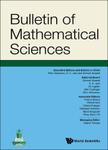版权所有:内蒙古大学图书馆 技术提供:维普资讯• 智图
内蒙古自治区呼和浩特市赛罕区大学西街235号 邮编: 010021

作者机构:Georgia Institute of Technology School of Earth and Atmospheric Sciences AtlantaGA United States Georgia Insitute of Technology School of Computational Science and Engineering AtlantaGA United States Georgia Institute of Technology College of Computing GA Atlanta United States Utrecht University Utrecht Netherlands Microsoft Corp. RedmondWA United States SINTEF Trondheim Norway Imperial College London Department of Earth Science and Engineering London United Kingdom
出 版 物:《Leading Edge》 (Leading Edge)
年 卷 期:2023年第42卷第7期
页 面:474-486页
核心收录:
学科分类:0711[理学-系统科学] 1205[管理学-图书情报与档案管理] 07[理学] 080103[工学-流体力学] 0708[理学-地球物理学] 0835[工学-软件工程] 0801[工学-力学(可授工学、理学学位)] 0812[工学-计算机科学与技术(可授工学、理学学位)]
主 题:Multiphysics
摘 要:We present the Seismic Laboratory for Imaging and Modeling/Monitoring open-source software framework for computational geophysics and, more generally, inverse problems involving the wave equation (e.g., seismic and medical ultrasound), regularization with learned priors, and learned neural surrogates for multiphase flow simulations. By integrating multiple layers of abstraction, the software is designed to be both readable and scalable, allowing researchers to easily formulate problems in an abstract fashion while exploiting the latest developments in high-performance computing. The design principles and their benefits are illustrated and demonstrated by means of building a scalable prototype for permeability inversion from time-lapse crosswell seismic data, which, aside from coupling of wave physics and multiphase flow, involves machine learning. © 2023 The Authors. Published by the Society of Exploration Geophysicists. All article content, except where otherwise noted (including republished material), is licensed under a Creative Commons Attribution 4.0 Unported License (CC BY). See.